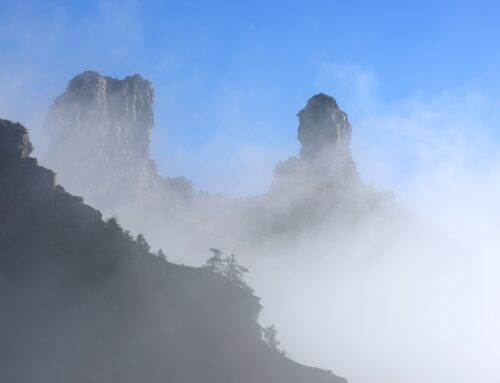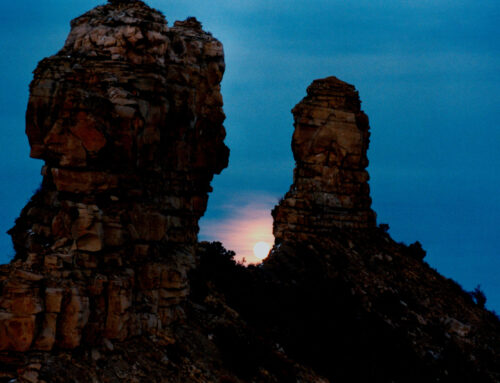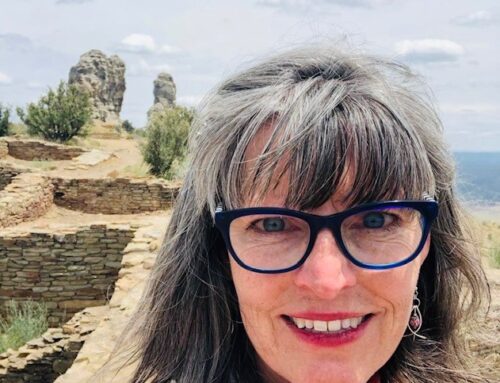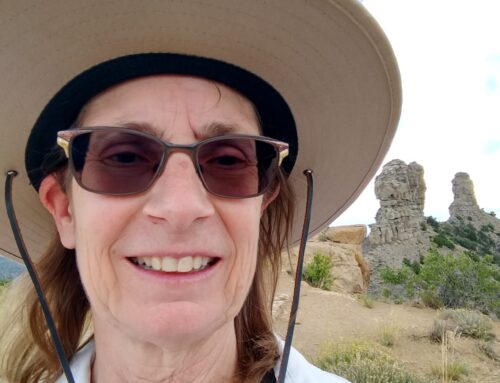By Stan Bush
CORTEZ, Colo. (CBS4) – Visitors to Canyons of the Ancients National Monument see cliffs of red sandstone hiding stone castles abandoned for centuries. What they do not see is a cloud of uncertainty looming over the area southwestern tribes believe is sacred.
In May, the Trump administration placed Canyons of the Ancients and 26 other national monuments under a federal review — one that could reduce the monument in size or revoke its monument protection outright.
President Bill Clinton declared Canyons of the Ancients a national monument in 2000 under the Antiquities Act, an executive power used by presidents to establish lands that are considered archaeologically important. The 178,000 acre conservation area near Cortez is considered one of the richest archeological sites in the world. Nearly 4 million artifacts that have been recovered there include arrowheads, tools, pottery and artworks. There are also numerous pueblos that still stand across the expansive monument.
“For people around the world, this is a globally unique phenomenon to have this density of archeological sites with this level of protection,” says Marietta Eaton, manager of Canyons of the Ancients from the Bureau of Land Management.
Pueblo natives lived in the area more than 1,000 years ago and a handful of tribes that still live in the region trace their lineage back there.
“When they come back here they are welcomed home by their ancestors and when they visit a site they call out to their grandfather and they say ‘Grandfather, I am here with my children and my wife,’” said Deborah Gangloff, President and CEO of the Crow Canyon Archaeological Center.
“Everything is going to be at risk if that monument is rescinded or reduced because you have lost a lot of those treasures,” said Gangloff, a sharp critic of the review.
“It would put at risk those lands. It would put them at risk of people who literally want to run ripshod over the lands, and I mean literally.”
Gangloff believes any change to the monument could encourage the BLM to trade parcels of land to developers, creating an irreversible slippery slope.
The monument is a national conservation area, but is also 80 percent leased for mineral extraction, including oil and gas and CO2, all of it controlled by federal land use laws that consider archaeological relics important resources.
“If we can show that on a monument that we can do conservation and other activities, if we can do that here we can do that on other conservation lands,” said Eaton.

(credit: CBS)
Archaeologists say the review threatening the monument is a political charade. Gangloff says the review is intended to only effect two monuments; Grand Staircase-Escalante National Monument and Bears Ears National Monument, both in Utah.
“It’s a waste of time and money of our government to be looking at things like Canyons of the Ancients,” said Gangloff.
Bears Ears was granted monument status by President Barack Obama in December of 2016. However, in January of this year the Utah legislature symbolically voted to rescind the Bears Ears and Grand Staircase-Escalante national monuments. Protests from supporters and opponents of the monuments have turned the debate over the landscape into a partisan spat.
“The legislature was against them in Utah even though the public supported them and I think this executive order was written in such a way just to capture those two,” said Gangloff.
She points to the language in the order itself. The review, under the authority of Interior Secretary Ryan Zinke, targets monuments that exceed 100,000 acres or monuments Zinke deems did not receive adequate public comment that go back to only 1996, the same year Grand Staircase-Escalante was designated.

Canyons of the Ancients National Monument (credit CBS)
“That just tipped it over the edge for me because it was not just the land size,” said Gangloff.
Utah lawmakers falsely claim turning those lands into monuments as federal land grabs, but the BLM, a federal agency under direction of the Interior Department, was already holding the lands in trust.
Gangloff says revoking Canyons of the Ancients monument status would be devastating to neighboring communities.
“You drive through the town of Cortez, it brings massive dollars to this town,” said Gangloff. “The economy would truly tank in this area if Canyons was taken off the list.”
Lawmakers have essentially proven that the review is a political shell game. In May, Republican lawmakers Sen. Cory Gardner and Rep. Scott Tipton, who represents the southwest corner of Colorado, wrote a letter to Secretary Zinke asking Canyons of the Ancients be allowed to keep its monument status. At a hearing in June, Gardner asked Zinke if Canyons of the Ancients was still under review. Zinke responded that the monument “was not on our priority review list.”

CBS4 sought comment from the Interior Department for nearly a month to get clarity on that statement by Zinke, but the department never answered. It is unclear what Zinke meant by a “priority review list” and if Canyons of the Ancients is not on that list, why it was ordered to be reviewed in the first place.
In that time, the Interior Department has removed the Upper Missouri River Breaks National Monument from the review list, a monument in Zinke’s home state of Montana. The Department has also recommended reducing Bears Ears’ footprint and allowing management of parts of the monument to be controlled by the state of Utah and local tribes.
Gardner believes Canyons of the Ancients will not suffer any changes, even though it is still on the review list. The review is expected to be completed by the end of the summer.
Gangloff says the monument is protecting a heritage that will be lost if federal protections are taken away.
“Once they’re destroyed or vandalized, they’re gone forever and you’re destroying our history, our American history that goes way back earlier than 1776.”
Stan Bush is a general assignment reporter at CBS4. His stories can be seen on CBS4 News at 10. Read his bio and follow him on Twitter @StanBushTV.





